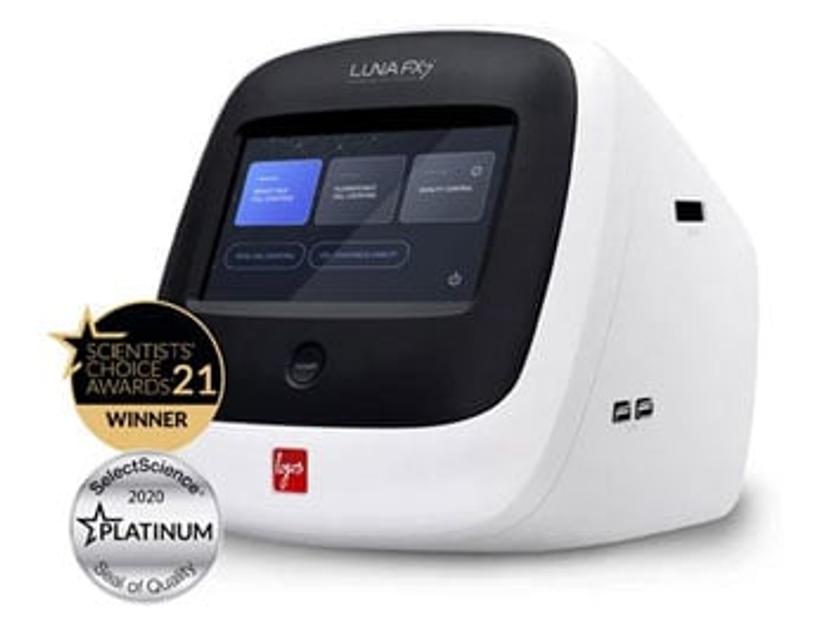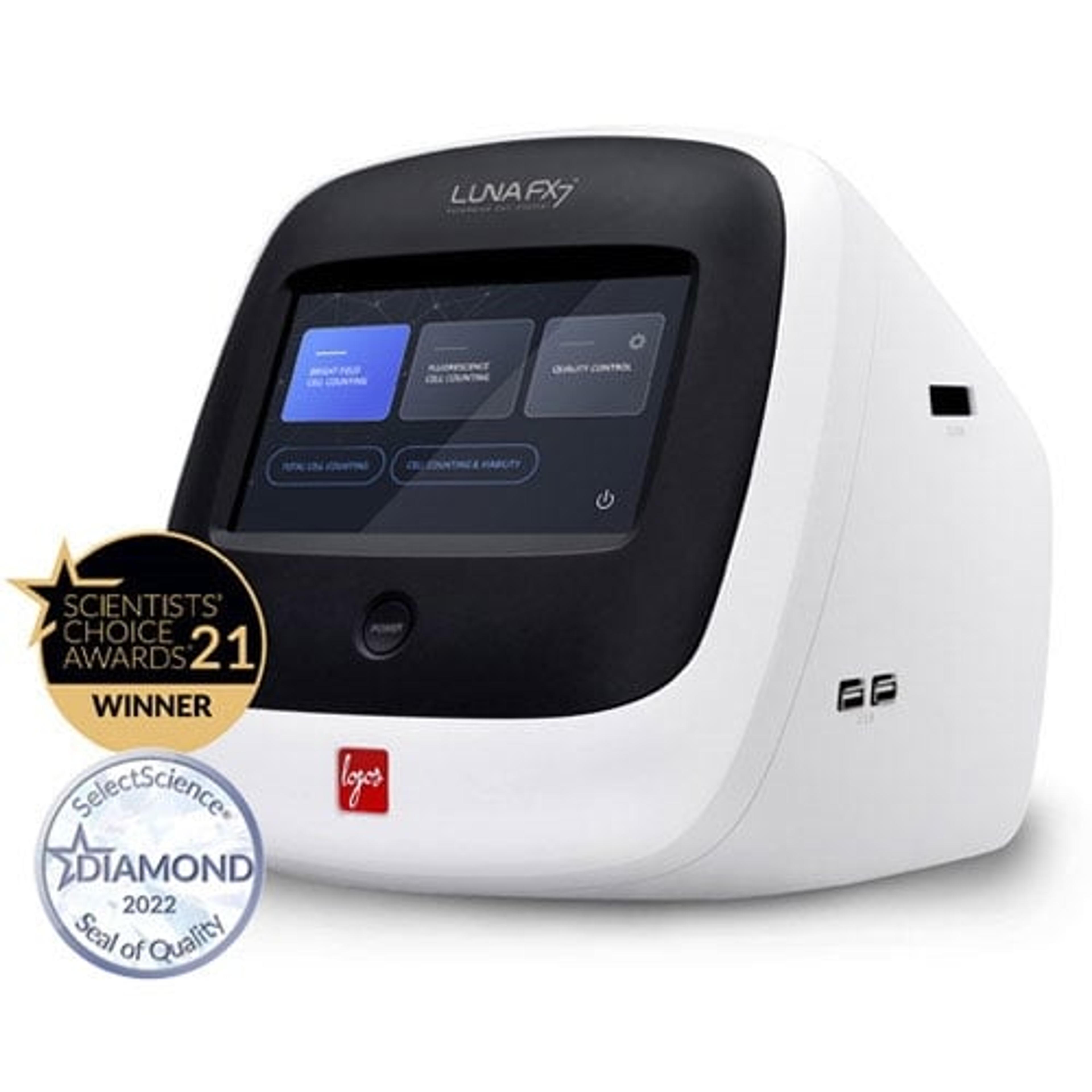From benchtop to cleanroom: Confidence in cell counting
The advanced cell counting technology designed to meet all your cell counting needs
31 Jul 2022

Cell counting is a simple laboratory procedure that is a vital step in many life science studies from basic research to medical diagnostics and other applied fields. Conducting manual cell counts is laborious and time-consuming and the quality of the data can vary widely depending on the operator.
One company hoping to address these challenges is Logos Biosystems. It was founded in 2008 by CEO, Neo Jung, Ph.D., and is committed to developing high-quality, easy-to-use, and innovative instruments for biologists around the globe. Since the launch of its first automated cell counter the Luna™ in 2012, the demand for automated solutions has grown. The company has continued to improve and refine its cell counting technology and today the Luna™ family of cell counters are highly rated by scientists worldwide, earning a SelectScience® Platinum Seal of Quality in 2020. The latest offering in the family, the Luna-FX7™, was designed to further meet a wide range of cell counting needs.
In this article we hear from Tim Steppe, Ph.D., the North American Application Specialist for Logos Biosystems. His primary role is to provide education and support for customers and sales representatives on Logos products and their applications, and how they might benefit customer workflows. “Our mission is to provide superior cellular imaging and analysis solutions to researchers in order to improve human health and understanding,” he says.
Decisions, decisions
With almost 20 years of experience in the industry, Steppe is well aware of the challenges researchers face when conducting cell counts. He explains, “it's the challenge of making a decision, of being confident that the data they have will allow them to make a good decision about how to proceed.” Data from cell counts is routinely used to help users make decisions about how to go forward in an experimental or manufacturing workflow. These decisions may be as simple as determining the dilutions for the next passage, or more complex ones about whether to proceed to the next step in single-cell DNA sequencing, or whether a CAR T preparation – a new form of immunotherapy – is sufficiently viable to be administered to a patient.
It is well-known that manual cell counting is a laborious and time-consuming procedure that results in inter- and intra-variation from the researchers. However, users of existing automated cell counters also experience difficulties that need to be addressed by new products. Most automated cell counters rely on users to find the focus manually, which can be very subjective. Furthermore, other factors such as human error, cell condition, and cell-staining efficiency have historically led to differing levels of variation in manual and automated cell counts.
Counting cells may be a simple task, but it is a vitally important one for many researchers that may have large financial implications. “It can cost researchers thousands of dollars if they make a poor decision based on poor data,” Steppe explains. “We can’t interpret the data or make those decisions, but our products and support services can provide them with the confidence that the data is accurate and reliable.”
Historically cell counting was primarily used in basic research, but it is now finding more and more applications in medical diagnostics and pharmaceuticals. Researchers in these fields may face additional challenges when counting cells including low measuring volumes, low-throughput, lack of regulatory compliance, and lack of validation tools. These customers require products that pass very strict quality control, validation, and security functions like the Federal Drug Agency (FDA) Code of Federal Regulations Title 21 (21 CFR). “They will also need to be able to network the system into their local networks and even potentially into their data arrays”, explains Steppe.
One cell counter for all
The need for simple, accurate, and reliable automated cell counters that are also compliant with 21 CFR Part 11 and other regulations was the driving force behind the development of the most advanced cell counter from Logos Biosystems to date, the LUNA-FX7™. Along with being fully 21 CFR compliant, the LUNA-FX7™ has two key features that are designed to make it stand out from older cell counters: dual fluorescence with improved fine-focus and a new autofocus algorithm, and a low coefficient of variation of just 1%.
Other features of the LUNA-FX7™ include remote management, a bioprocessing package, low consumable costs, and a wide range of cell counting slides. Gone are the days where you need several different systems for all your separate applications, the LUNA-FX7™ is designed for any researcher who wants to count cells, whether they are in a small academic laboratory or large pharmaceutical facility. “It is designed to meet automated cell counting needs from the bench top to the cleanroom,” Steppe says. “Because of its accuracy, reliability, ease of use, and our dedication to customer service, the main benefit the LUNA-FX7™ provides our customers is confidence. Confidence in the data and confidence that we will be there to support them when needed.”
New name, same mission
When Logos Biosystems was founded, the company’s primary focus was on providing equipment for basic research. The development of the LUNA-FX7™ and other recent products has seen it broadening its scope into diagnostics and other clinical applications. To reflect this change, the company is currently embarking on an impressive rebrand, and Steppe is excited about what the future holds: “for me, the most exciting part is ‘what’s next?’. We are continually developing new products and trying to reach new markets and customers and it requires us to continually learn about new technologies, techniques, and research in order to meet their needs.”
Find out more in these expert resources:
• Ultimate guide to automated cell counting. Download eBook >>
• Achieving higher throughput and accuracy from the bench to the cleanroom. Register for free, on-demand webinar >>
• Are cell counting issues affecting your experimental success? Read article >>

